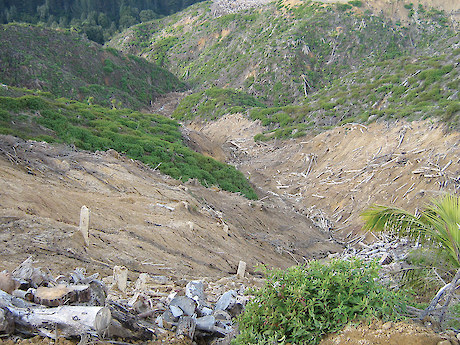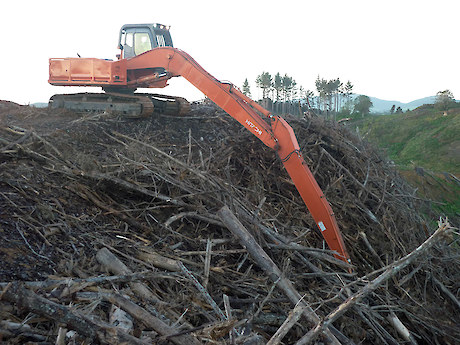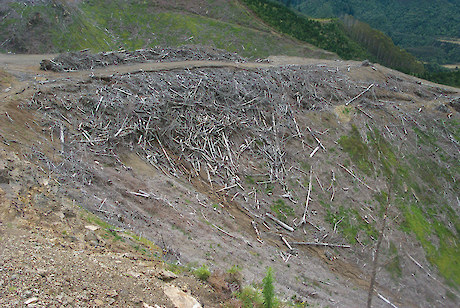This section will only discuss the engineering related rehabilitation and repairs and maintenance. For example, burning of slash will not be discussed. Refer to the Forest Practice Guide, Managing slash on landings for additional information.
Check new landings and pads after construction as part of a regular inspection programme. Landings are often built up to 8-12 months prior to harvesting, and post-construction repairs and maintenance may be required in more erosion prone areas especially after heavy rainfall. Most landings need post-harvest rehabilitation and decommissioning. The two critical components to manage are water control and slash. Poorly directed water can pond or undermine earthworks. The volume and weight of slash, including bark and the water it can contain, will also load the landing with additional weight and reduce the shear strength of the structure.
Unstable slash should be pulled back from the landing edge with an excavator. Also remove to solid ground harvesting processor generated deposits of bark where it has formed deep, wet, heavy layers where it could increase the risk of landing failure. On steep erodible slopes, if processing slash is not contained on purpose-built slash benches, it should be reduced to a level where the ground is visible through the remaining material. Install drainage and sediment control structures to improve water control and fill stability. For example, minimise the entry of stormwater into birds’ nests. Removing slash from risk prone locations can be extremely challenging to do, and in some cases is not possible. Placing the slash in the right place during harvesting not only saves costs but also eliminates or reduces a problem.
The details behind maintenance of erosion and sediment control structures are described in section 9.9.




